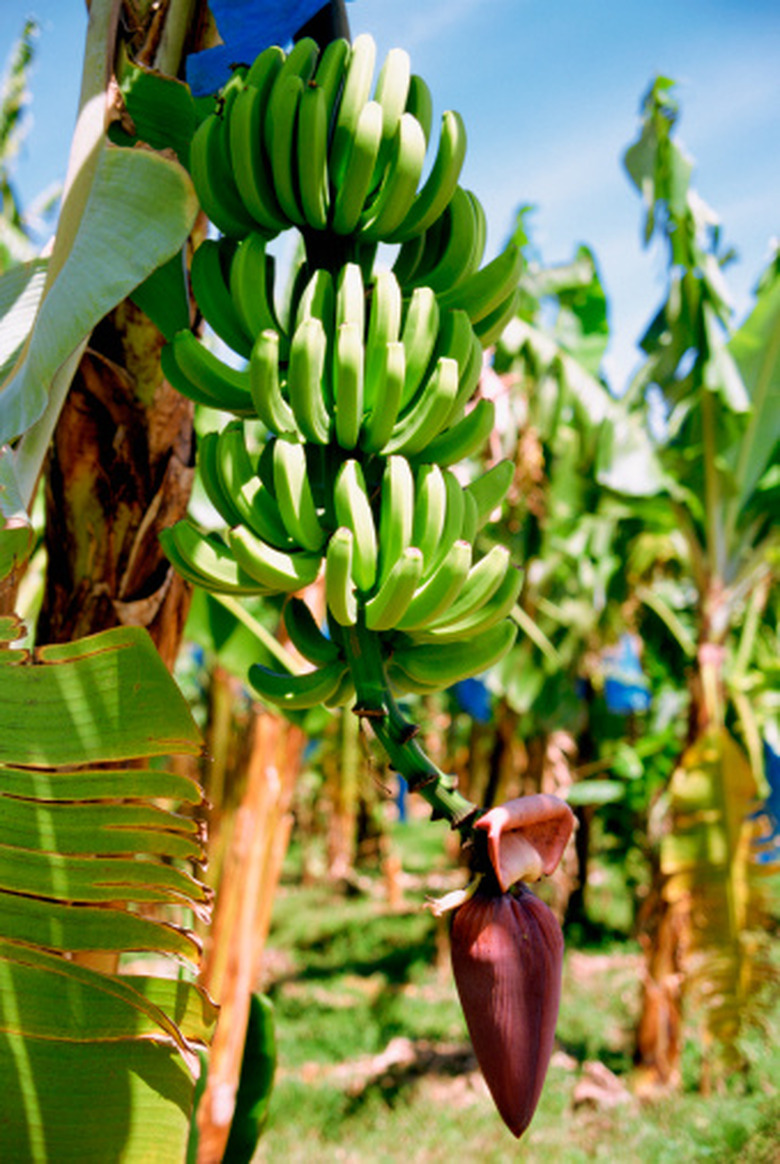How To Grow Bananas From Seeds
The vast majority of modern bananas grown across the world today are the result of extensive breeding that renders the fruits large, tasty and lacking seeds. If you grow a wild, genetically unmodified species of banana, large seeds may occur in mature fruits to harvest and sow to sprout into a new plant. Generally, banana propagation involves splitting up rhizome roots, called pups, to create new plants that genetically match the mother banana plant. This asexual (vegetative) reproduction guarantees that the new plants mature to the same size and produce the same quality fruits that gardeners prefer.
Step 1
Soak the banana seeds in lukewarm water for 24 to 48 hours. Although optional according to an online Pacific Island Agroforestry publication, the soaking softens the seed coat, making it easier and faster for the embryo inside to sprout.
Step 2
Prepare an outdoor soil bed in a sunny location or potting soil mix to put in containers to sow the banana seed. The soil should be sand-based but rich in organic matter like compost, peat or leaf mold. Create a mix of 60 percent sand or light, airy loam with 40 percent organic matter.
- The vast majority of modern bananas grown across the world today are the result of extensive breeding that renders the fruits large, tasty and lacking seeds.
- Prepare an outdoor soil bed in a sunny location or potting soil mix to put in containers to sow the banana seed.
Step 3
Lift the soaked banana seed from the water bath and immediately plant in the soil. A small hole made with your fingers just deep enough to cover the top of the seed with a few grains of soil suffices. Do not plant too deeply.
Step 4
Water the soil to bring the soil particles in direct contact with the seed. Monitor the soil's moisture daily, keeping it evenly moist, neither dry nor soggy.
Step 5
Move any containers with sown banana seeds to a sunny location to warm the soil. Watering needs increase when containers are basking in sun, so check the soil daily to ensure it always remains moist. Dry soil dehydrates the germinating seed and eventually kills it.
- Lift the soaked banana seed from the water bath and immediately plant in the soil.
- Move any containers with sown banana seeds to a sunny location to warm the soil.
Step 6
Maintain a regimen to keep the soil moist until the seed finally germinates, revealing a small leaf from the soil surface. The specific rate of seed germination varies by plant species. Some germinate in two or three weeks, while others may take two or more months. Moreover, warmer soil temperatures tend to hasten germination, but each plant species' seed response to temperature also varies. Keep temperatures above 60 degrees F regardless.
Tip
If you wait to sow the banana seeds until there's no threat of frost, store the seeds in a shaded, cool, dry location between 55 and 70 degrees F. Wild bananas (such as Musa balbisiana) or ornamental bananas (such as Musa velutina) that haven't been bred to lack seeds in their fruits are best candidates for propagating new plants from collected seeds.
